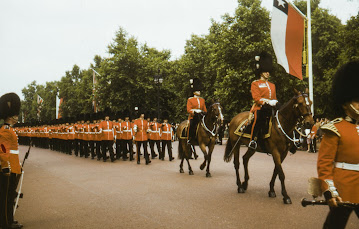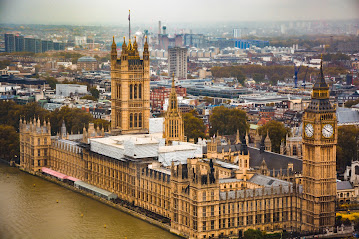Quirks and Traditions of the UK Parliament: Prorogation Ceremony - A Historical Farewell
The UK Parliament is steeped in rich history and traditions that lend a unique charm to its proceedings. Among the fascinating ceremonies that take place within the hallowed halls of Westminster is the Prorogation Ceremony. In this blog post, we will explore the quirks and traditions surrounding the Prorogation Ceremony, delving into its historical significance and the symbolic farewell it represents.
The Meaning of Prorogation:
Prorogation is the formal term for the end of a parliamentary session. It marks the closing of Parliament before a new session begins. The Prorogation Ceremony serves as a symbolic transition, signalling the conclusion of legislative activities and the start of a new chapter for the UK Parliament.
Historical Significance:
The Prorogation Ceremony has a long and storied history that dates back centuries. It represents the monarch's involvement in the parliamentary process and harks back to the time when the monarch played a more direct role in the governance of the country. Today, while the monarch's involvement is largely ceremonial, the Prorogation Ceremony still holds immense historical and symbolic value.
Royal Commission:
At the heart of the Prorogation Ceremony is the Royal Commission. This is a group of three or more members appointed by the monarch, usually senior officials, who represent the sovereign's authority. The Royal Commission is responsible for officially proroguing Parliament on behalf of the monarch.
The House of Lords:
During the Prorogation Ceremony, the Royal Commission, adorned in ceremonial attire, enters the House of Lords. The Gentleman Usher of the Black Rod, a figure of historical significance, summons the members of the House of Commons to the Lord's Chamber. This symbolic act emphasizes the unity and cooperation between the two chambers of Parliament.
Reading the Prorogation Speech:
Once both houses are assembled, the Lord Chancellor, acting on behalf of the monarch, reads the Prorogation Speech. This speech outlines the achievements and progress made during the parliamentary session and expresses gratitude to the members of Parliament for their work. It also highlights the government's priorities for the upcoming session.
Traditional Formalities:
The Prorogation Ceremony includes various traditional formalities, such as the Speaker's Approbation. In this tradition, the Speaker of the House of Commons, after being summoned to the Lord's Chamber, signifies the approval of the prorogation by bowing to the Royal Commission. This act reflects the Speaker's role as a representative of the House of Commons in the ceremony.
The End of a Session:
With the reading of the Prorogation Speech, the parliamentary session officially comes to an end. This signals a period of recess, during which Parliament is not in session until a new session begins. The Prorogation Ceremony acts as a farewell to the outgoing session, allowing members of Parliament to reflect on their achievements and prepare for the future.
Conclusion:
The Prorogation Ceremony is a cherished tradition within the UK Parliament, representing the historical relationship between the monarch and Parliament. It symbolizes the conclusion of a parliamentary session and the start of a new phase of legislative activities. Through its formalities and customs, the Prorogation Ceremony embodies the continuity, dignity, and reverence associated with the UK Parliament. It serves as a reminder of the institution's rich history and the enduring traditions that shape its proceedings.






Comments
Post a Comment